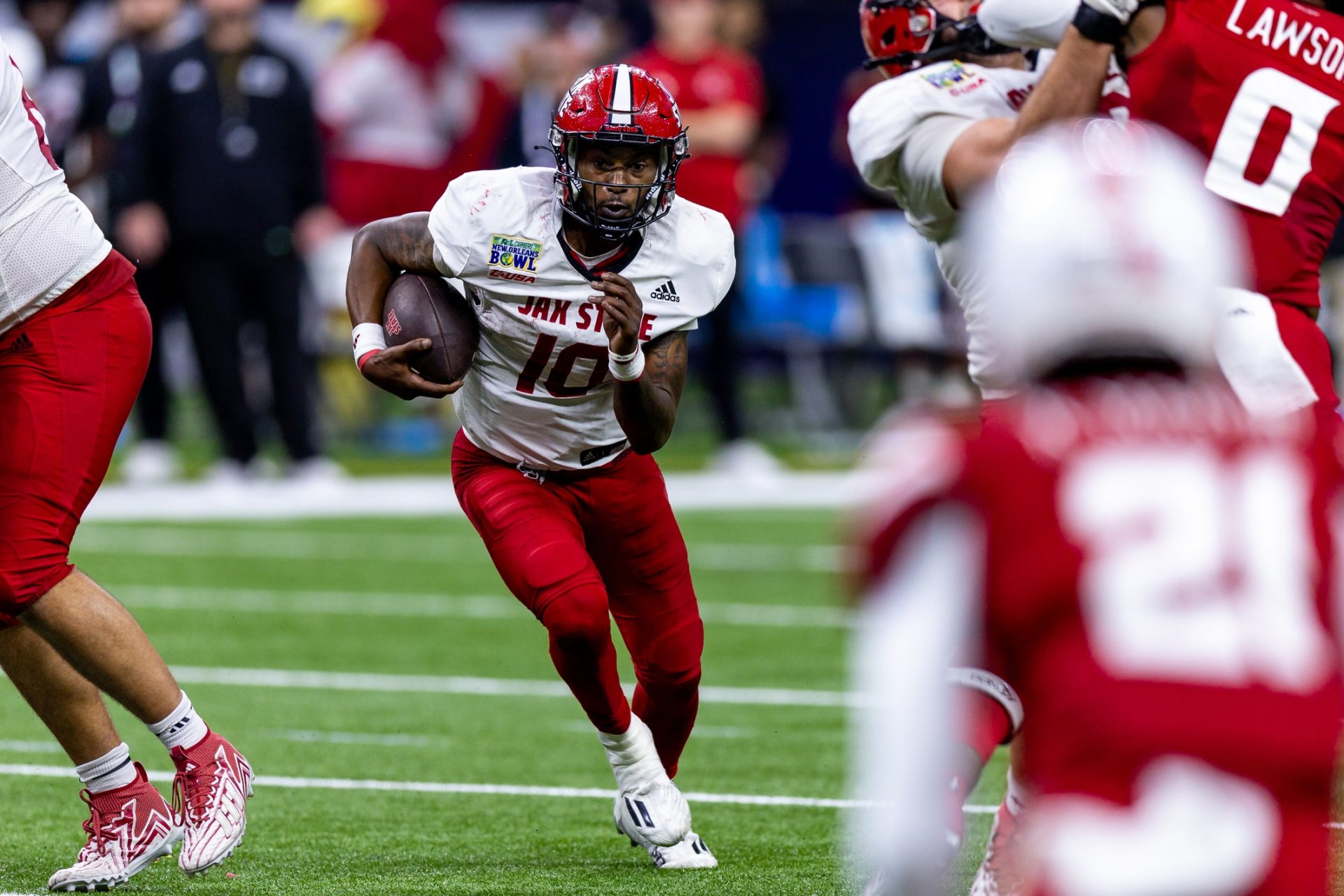Week 1 of the college football season is rapidly approaching, and while there are a few marquee matchups, many of the nation’s best programs will play tune-up games against FCS teams.
But beware! Bigger doesn’t always mean better, and college football fans have already been treated to one FCS-over-FBS win. So, while FBS teams usually beat their FCS opponents, it’s not a given.
What is the difference between the FCS and the more well-known FBS in college football?

What Is the Difference Between FBS and FCS?
While both FCS and FBS teams are under the NCAA’s jurisdiction, there are a few differences between them.
The Football Bowl Subdivision (FBS) is the highest group of Division I teams. Featuring 134 teams in 10 conferences, the FBS is home to the largest schools in college football.
The Football Championship Subdivision (FCS) also competes in Division I. However, these schools are typically a small step down from their FBS counterparts, and the league has its own playoffs and championship game. The FCS currently has 129 teams in 13 conferences, and at the end of the season, they compete in a 24-team playoff.
Prior to 2005, this subdivision was referred to as Division I-AA.
Can Teams Move From FCS to FBS?
FCS teams typically have smaller operating budgets and fewer scholarships than FBS teams, but an FCS team can attempt to make the jump to the higher subdivision — if it meets certain requirements.
First, schools must be able to afford the cost of extra scholarships and increased travel. FBS teams are currently capped at 85 scholarship football players, while FCS teams are allowed just 63. The total scholarship difference across the minimum 16 varsity sports amounts to about 210 scholarships, or $6 million.
Additionally, the NCAA changed its requirements in October 2023 to make it harder for teams to make the jump. Now, FCS teams must pay a $5 million fee to change divisions.
While the NCAA made this change to make sure FCS teams are prepared to compete before making the jump, recent history shows it might be unnecessary.
MORE: Simulate the College Football Season with CFN’s College Football Playoff Predictor
Last season, Jacksonville State and Sam Houston State made the move to FBS. The JSU Gamecocks were immediately competitive, going 9-4 and winning the New Orleans Bowl despite rules that make postseason appearances rare.
(For the first two years of the transition, new FBS teams can’t go to bowls unless there are too few teams meeting the six-win threshold to qualify).
Before that, James Madison experienced immediate success. Group of Five powers Appalachian State and Coastal Carolina also made the move within the last 15 years. This season, Kennesaw State will begin its transition.
While there is little precedent for teams moving in the opposite direction, Idaho moved from FBS to FCS in 2018 after 23 years in the sport’s highest subdivision. There is typically more money in FBS, and thus, teams often stay there.
So, while the two subdivisions are similar, and both technically in Division I, there are significant differences. Even given the stricter entrance requirements, it’s likely that some FCS teams will attempt to make the transition in the next few years.
College Football Network has you covered with the latest news and analysis, rankings, transfer portal information, top 10 returning players, the 2024 college football season schedule, and much more!

